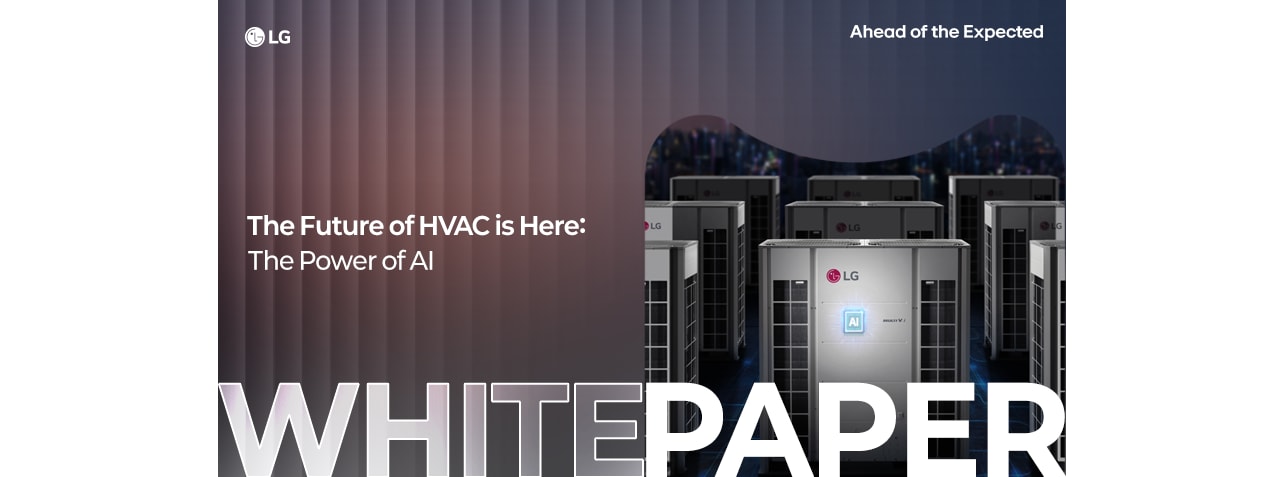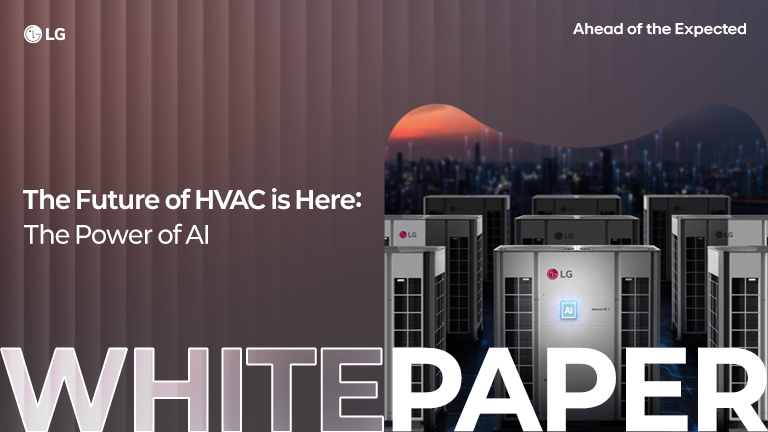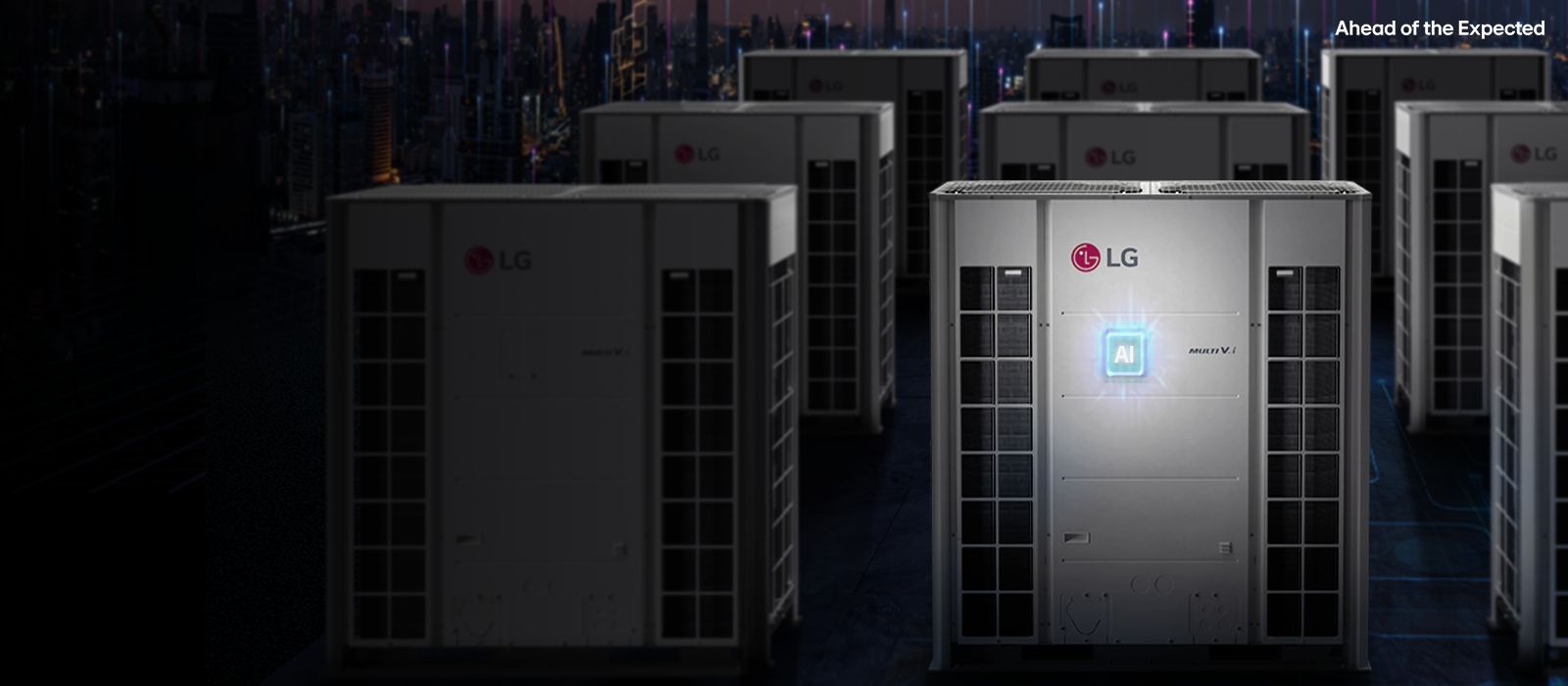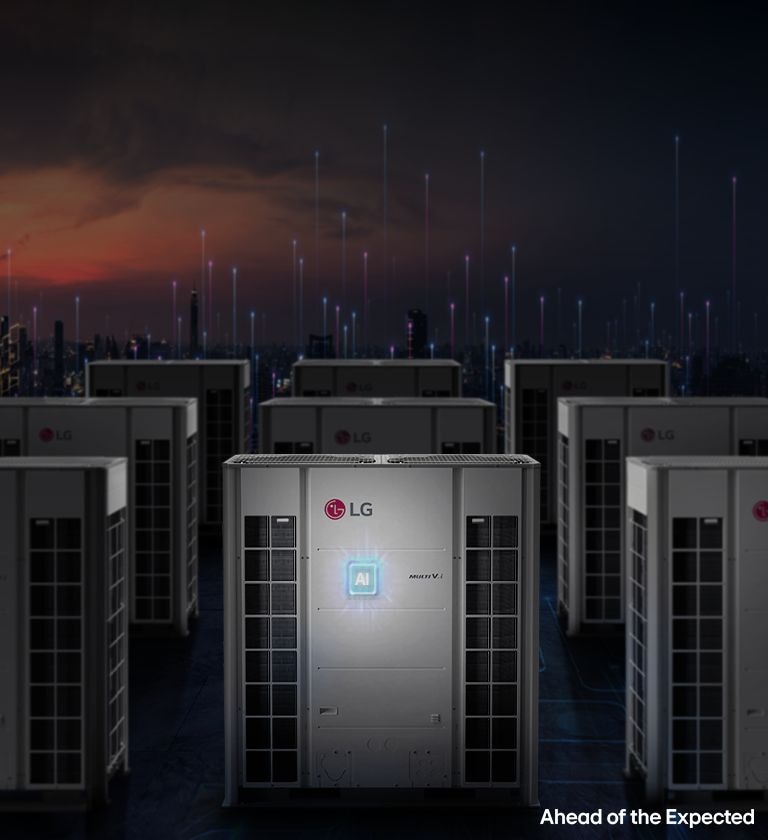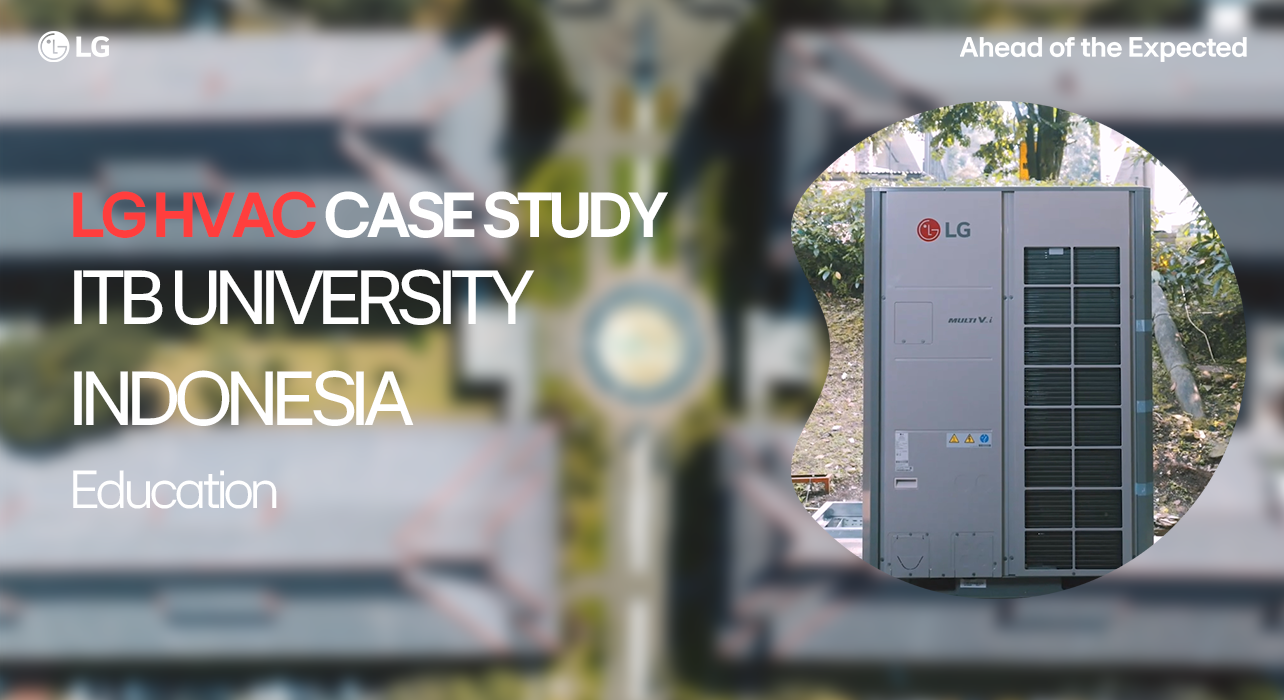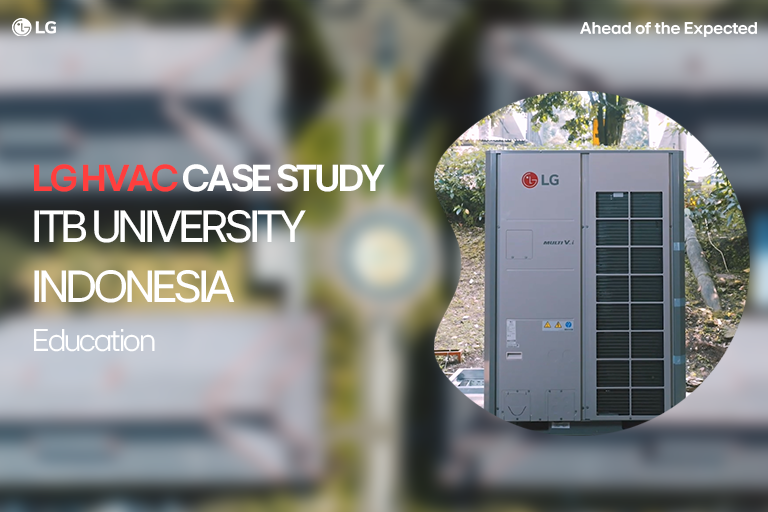-
What happens when artificial intelligence begins managing the climate of a university building? At the Bandung Institute of Technology (ITB), one of the Indonesia’s most respected universities, that question became more than a thought experiment. To explore the idea, ITB University and LG HVAC Solutions have jointly launched the project as a collaborative initiative and prepared an experiment in two classrooms of the Labtek VI building, turning them into a living laboratory to see how AI could adapt to real academic life.
Energy efficiency is no small issue for universities. Classrooms and labs fill and empty unpredictably. Traditional HVAC systems often run at full power regardless, wasting electricity and raising costs. ITB wanted a smarter answer.
In 2024, LG HVAC Solutions and ITB launched Indonesia’s first AI-driven HVAC field project. With the installation of the Multi V i VRF system in ITB’s Labtek VI building, the project set out only to test performance but to uncover how AI could learn, adapt, and ultimately transform campus energy use.
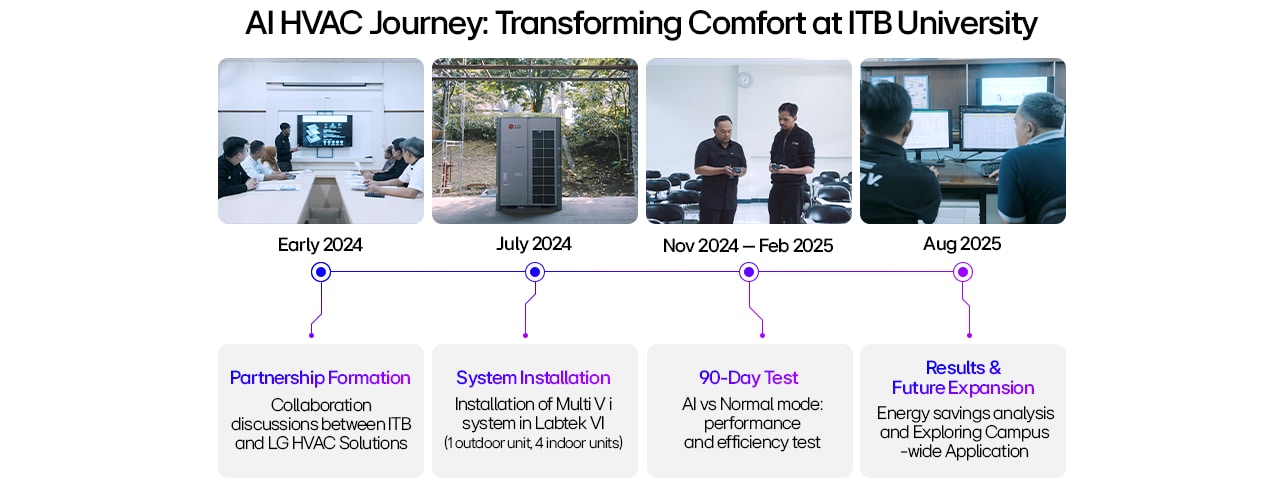
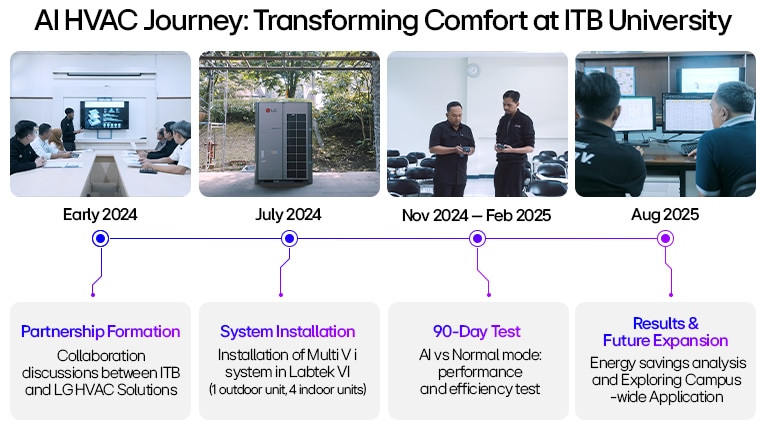
-
A Campus Challenge
The story began with discomfort. Like many universities, ITB faced the realities of running energy-hungry buildings in a tropical climate. Classrooms filled in the morning, emptied by lunch, and refilled in the afternoon, creating sharp fluctuations in cooling demand. In real operating environments, such rapid changes in load make it extremely difficult for facility managers to control the air conditioning manually, often leading to higher energy consumption. This highlighted the clear need for a smarter way to optimize energy use while maintaining comfort. One side of the building baked in sunlight while shaded corners stayed cool. Air conditioners worked overtime, often cooling empty rooms, and monthly electricity bills reflected the imbalance.

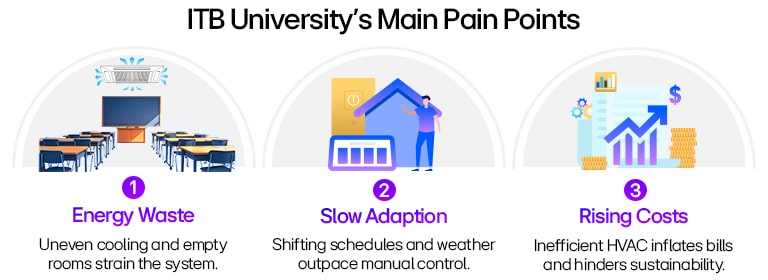
-
“Our classrooms and labs often felt unbalanced,” explained Seno Nugroho, Building Manager at Labtek VI. “The east side overheated under the sun, while other rooms stayed cool. And empty classrooms kept consuming electricity. These imbalances drove up monthly bills.” This was not just an inconvenience. It was a cost, a sustainability issue, and an opportunity to rethink how comfort could be delivered more intelligently.
-
Installing Intelligence
In July 2024, ITB partnered with LG HVAC Solutions to explore a different path. Following months of analysis and joint discussions, the project began with the installation of one outdoor unit and four indoor units, selected and configured according to room size and usage. But the real breakthrough was invisible: the AI engine inside LG Multi V i VRF system.
-
“By grouping similar conditions and aiming for optimal settings, the LG Multi V i system is expected to sense changes in load, temperature, and humidity,” said Erwin Praseto, LG Sales Engineer. “It is designed to adjust compressor speed and airflow, so students could feel steady comfort while the building could consume less energy.”
-
LG Multi V i’s AI Smart Care uses AI-based deep learning to analyze key variables such as temperature, humidity, and airflow, and predicts the time required to reach the set temperature. Based on these predictions, the system flexibly operates to either accelerate cooling and heating or optimize energy use, adjusting compressor speed, refrigerant flow, and fan operation to balance comfort and efficiency. In addition, AI Indoor Space Care groups indoor units according to environmental similarity, balances temperature across the room, and automatically activates or deactivates units to maintain comfort while avoiding overcooling.
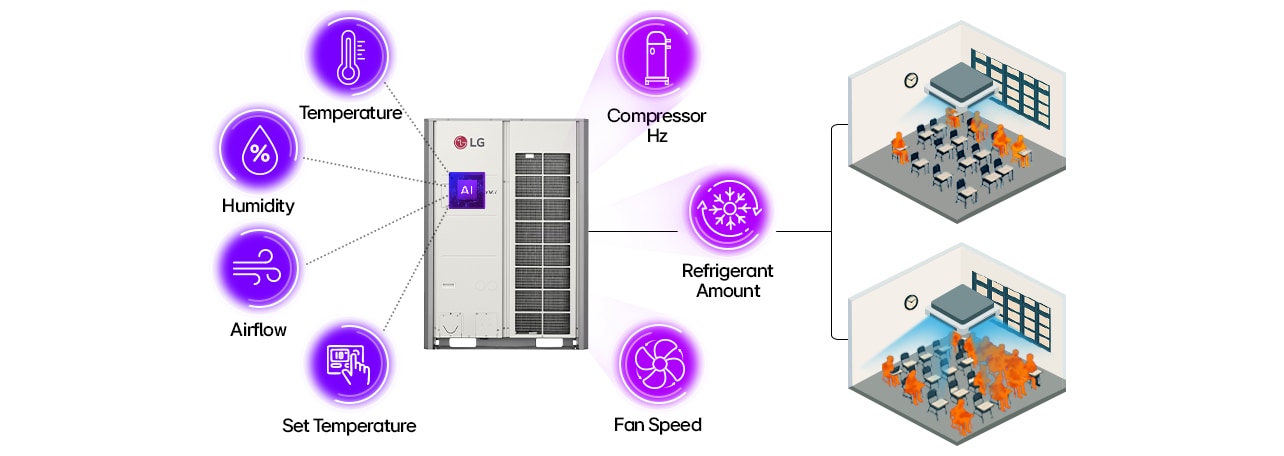
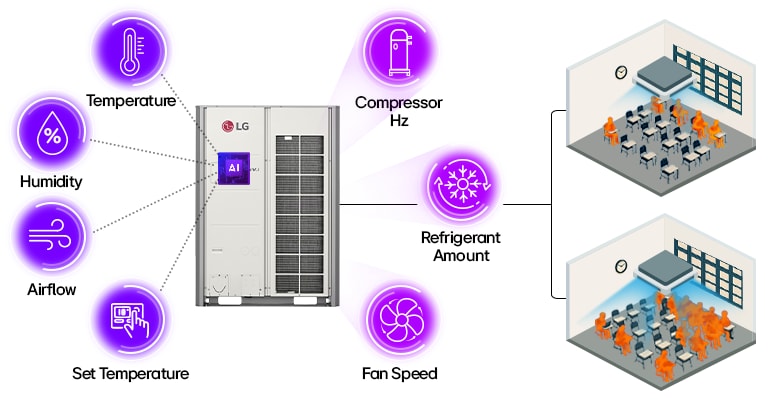
-
Rather than simply reacting to thermostat settings, the system gathered and analyzed environmental data, adapting operation minute by minute. It was designed not only to cool, but to learn.
-
The 90-Day Test
To verify its capabilities, ITB engineers devised a clear test. For 90 days, the LG Multi V i system ran in Normal mode one day and AI mode the next. This alternating schedule allowed the team to capture side-by-side data in the same classrooms under the same conditions, and because these rooms were actively used for university classes, the test relied entirely on real operating environments.
The results indicated that compared to Normal mode operation, the AI mode showed a clear difference. Over the 90-day test, the average compressor workload dropped by 37.7%, yet indoor temperature remained steady within ±1°C and humidity variation was just 3.97%. Most importantly, power consumption was reduced by 49.2%, and electricity bills showed nearly the same decrease.*
* The results demonstrated in this article are based on the operation of one Multi V i (Model: ARUN140LTE6) and four DUAL Vane 4-Way Cassette units (Models: ARNU28GTBB4, ARNU42GTAB4) conducted from November 1st, 2024, to February 28th, 2025.
* These results are specific to the conditions and setup of the site, and may vary under different conditions.
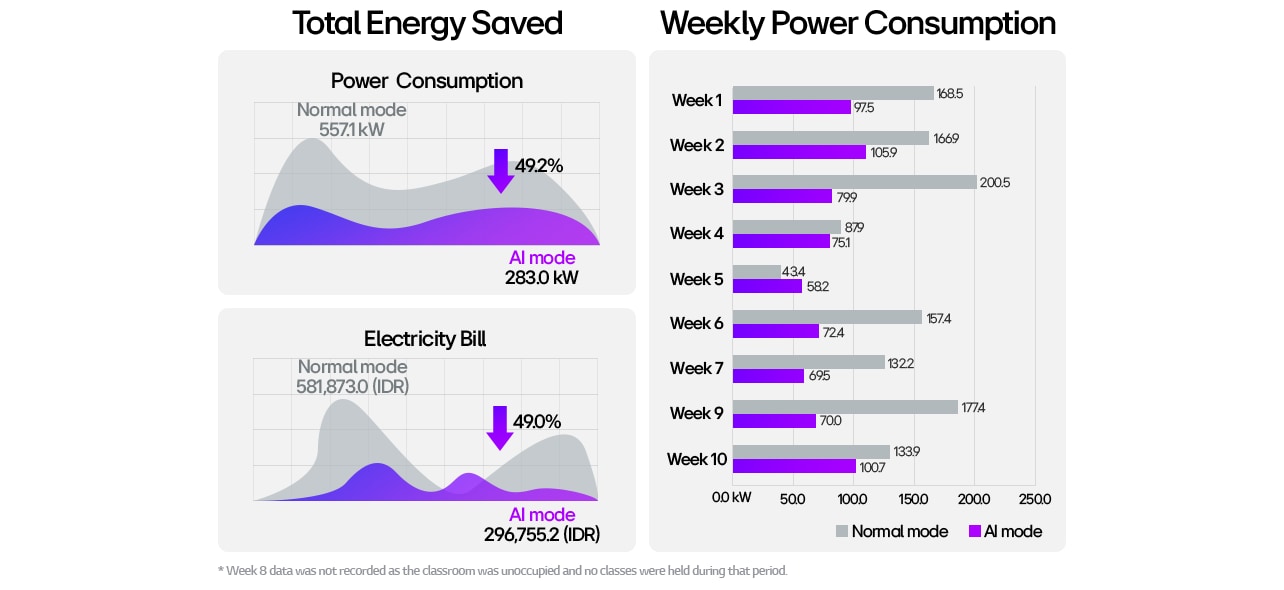
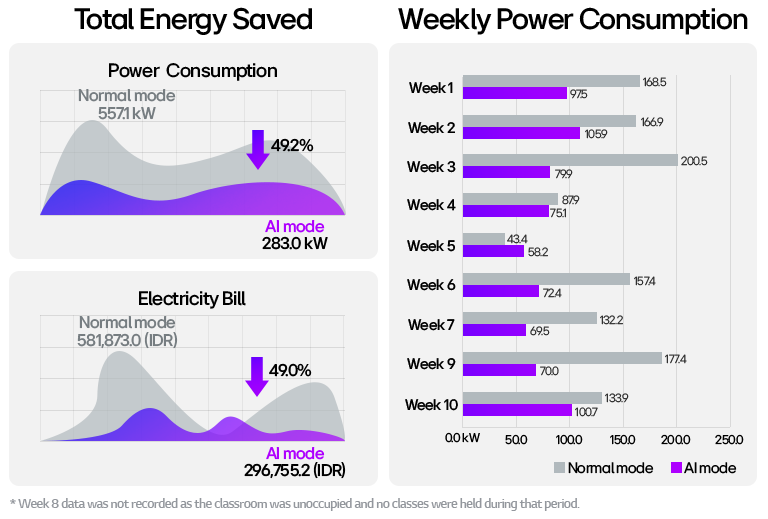
-
In other words, the compressor worked significantly less in AI mode, but there was no meaningful difference in temperature or humidity compared to Normal mode. The classrooms maintained the same level of comfort, while energy use was almost cut in half—showing that efficiency can be achieved without compromising the learning environment.
Moreover, because the test was conducted in real classrooms actively used for university lectures, the results reflected the highly variable load conditions of actual campus life. These real-world fluctuations further amplified the benefit of AI control. In fact, under such unpredictable conditions, AI mode consistently demonstrated even greater energy savings than what might have been expected from a controlled laboratory experiment.*
For ITB University, the findings provided more than numbers. They offered confidence that intelligent HVAC could achieve measurable efficiency while preserving the comfort essential for learning environments.
* Actual results may vary depending on the usage environment.
-
A Year of Learning
While the 90-day test made headlines, the longer story came from nearly a year of continuous operation. Through monsoon rains, humid heat, exam weeks, and fluctuating timetables, the AI continued to refine its performance. It learned occupancy patterns, anticipated peak loads, and scaled back output when classrooms emptied unexpectedly.
Faculty noted that computer labs stayed consistently cool even during long sessions. Students commented less on uneven temperatures. Facilities managers noted a trend toward reduced monthly energy costs during the project. What began as an experiment became daily practice—a demonstration of what intelligent climate control looks like in real life.
-
Beyond One Building
The savings in Labtek VI building invite a larger question: what happens when entire campuses adopt AI-driven HVAC? What if municipal buildings, libraries, or corporate towers operated this way? For LG HVAC Solutions, the ITB project represented more than a successful installation. It showed how energy management could shift from reactive maintenance to proactive intelligence.
-
“The LG Multi V i is not just an energy-efficient HVAC system—it’s a testament of LG’s innovation and the start of a new era in HVAC technology,” reflected Erwin Praseto, LG Sales Engineer.
In a world where institutions are under pressure to lower costs and meet sustainability targets, the lesson from ITB is clear. The project demonstrates that energy savings can be measured under these conditions.
-
Conclusion
The ITB project proved more than a technical success, showing how AI-driven HVAC can deliver measurable efficiency while preserving comfort in real academic settings, and offering insights for universities, public institutions, commercial facilities, and other industries with highly variable load conditions worldwide.
* This project was conducted in collaboration between LG HVAC Solutions and ITB University, as part of a collaborative research project.
FAQs
-
Q.
How much energy did the AI-driven HVAC, Multi V i, save at ITB?
-
A.In a 90-days test, AI Mode reduced power consumption by 49.2%.
-
Q.
Is AI-driven HVAC effective for classrooms with fluctuating occupancy?
-
A.Yes. Comfort stayed consistent even as the number of students in the classroom constantly changed.
-
Q.
What role does LG Multi V i play?
-
A.It is an AI-enabled VRF system that adapts and controls in real time to reduce energy waste.
-
Q.
Can these results be applied elsewhere?
-
A.Results may vary, but ITB shows the strong potential for universities, public institutions, and commercial facilities worldwide.
-
Watch Full Story
-
Download the White Paper for More Insights
